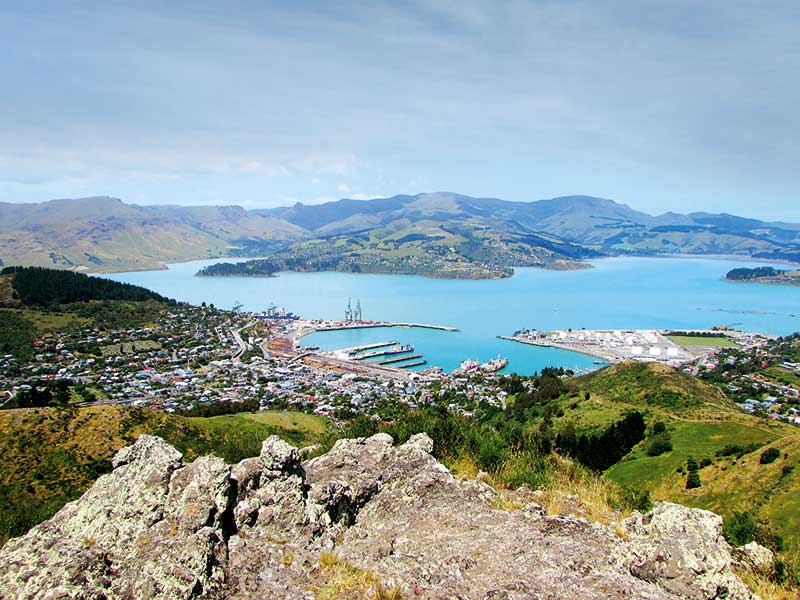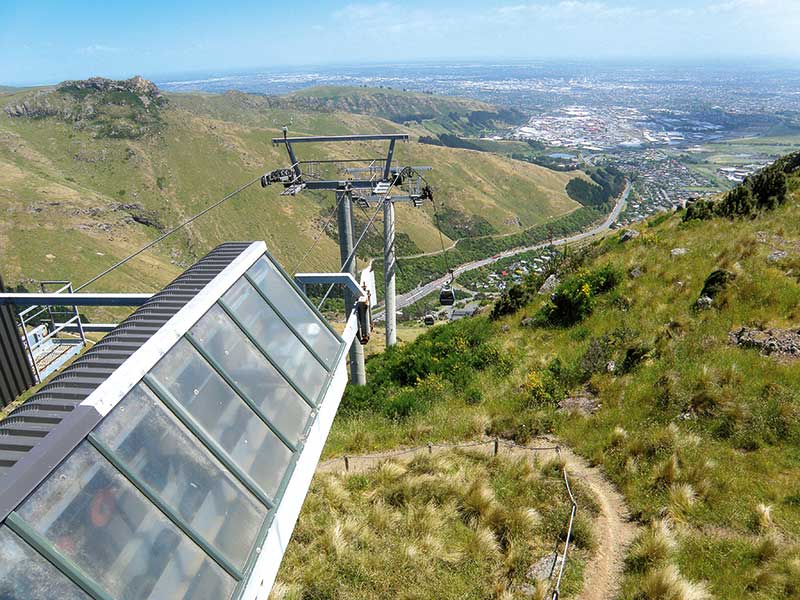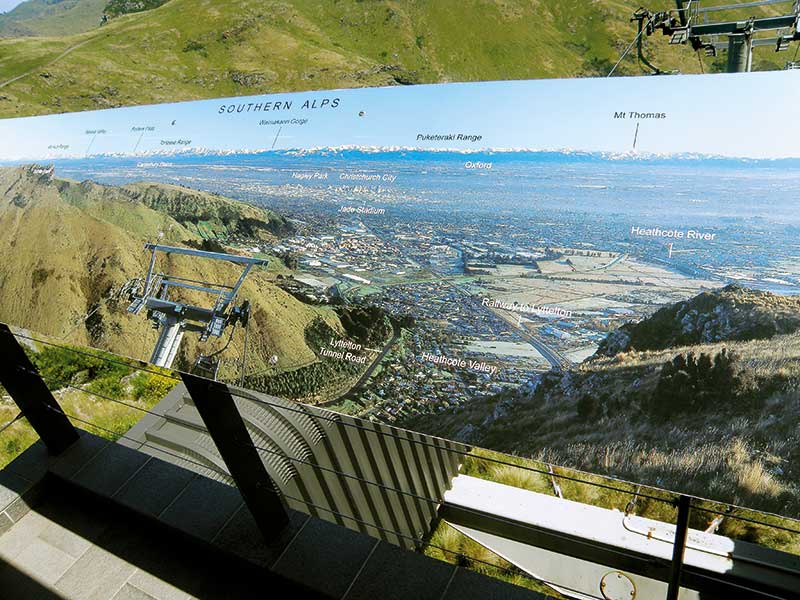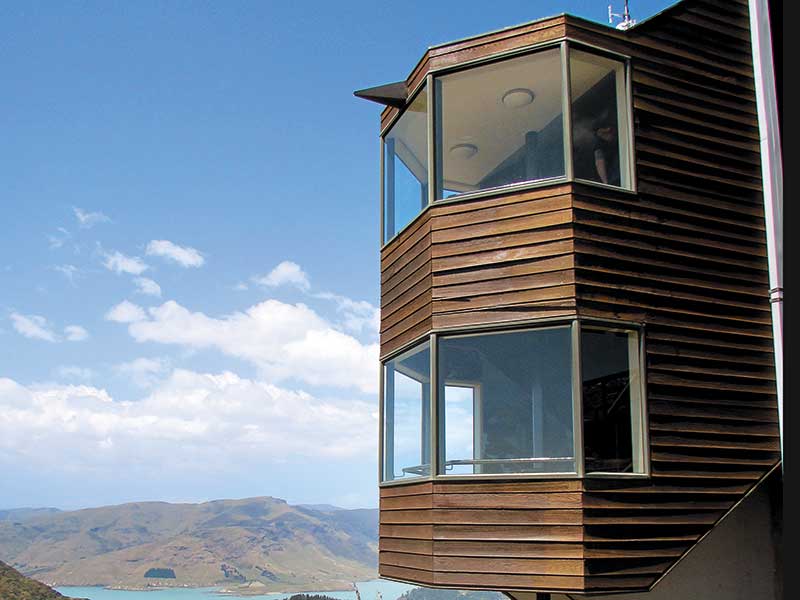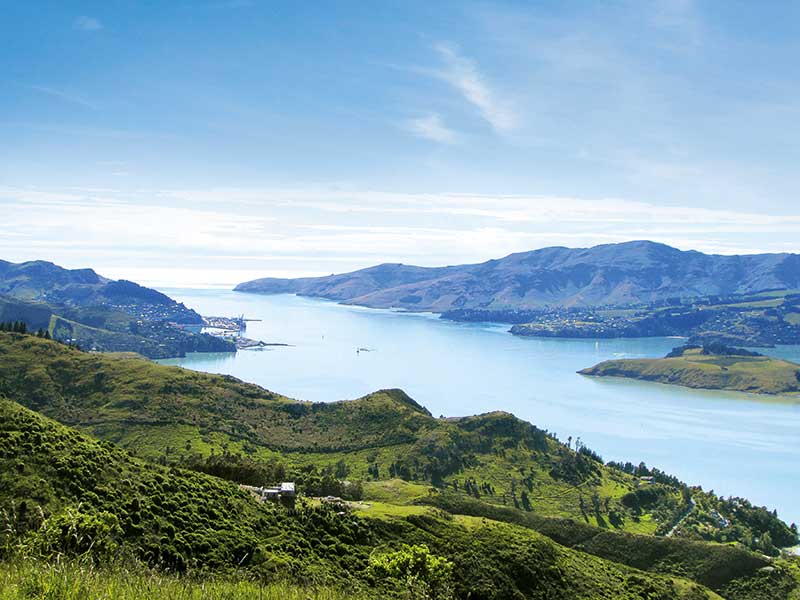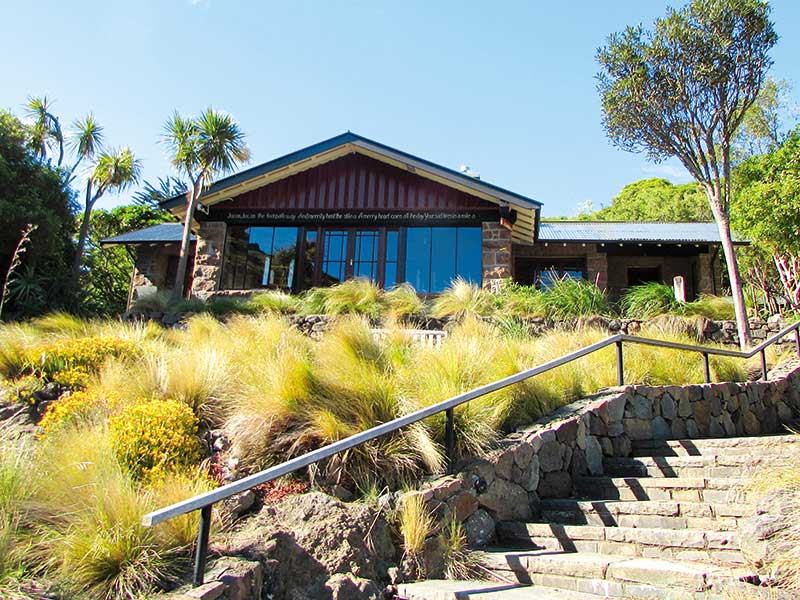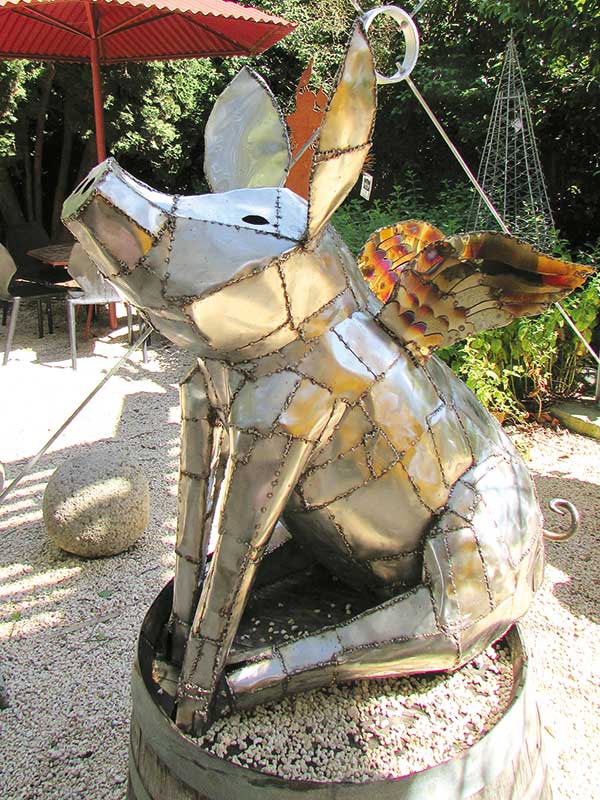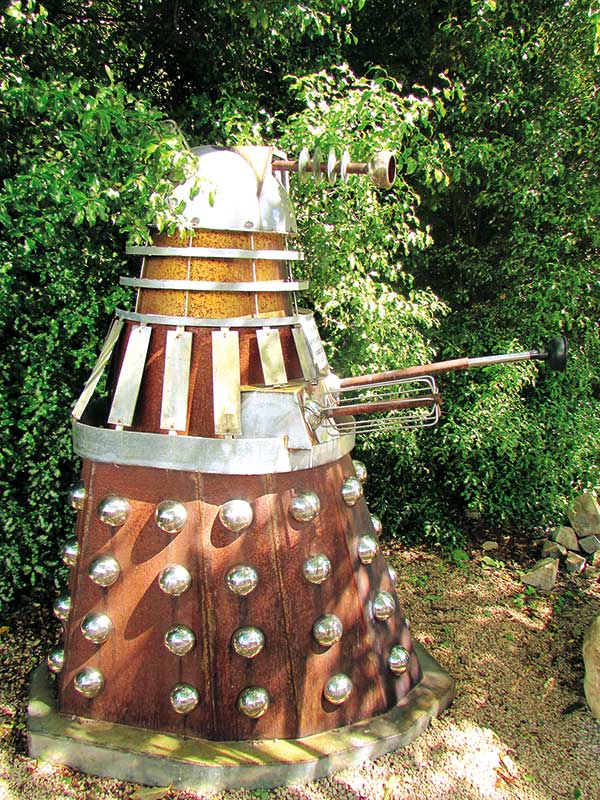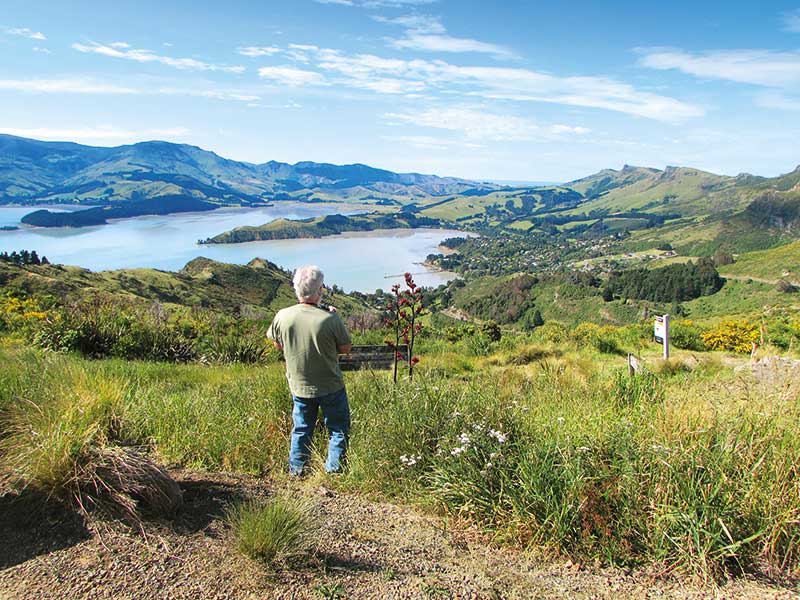Last time we visited Christchurch, we decided to do the tourist thing and take the gondola to the top of the Port Hills.
It was a short drive from the city centre to the gondola car park in Heathcote Valley. Tickets purchased, we climbed aboard and the gondola began its 10-minute, kilometre-long trip. Our views got wider as we rose to the summit station on Mt Cavendish, 500 metres above the Canterbury Plains. From here, the 360-degree views were breathtaking.
We could see Christchurch spread below us to the west, and the Southern Alps hazy on the horizon. There were stunning views looking down to Lyttelton Harbour and across to Banks Peninsula, Lake Ellesmere, and to peeks of the ocean. There was an observation deck at the summit station and we spent some time just taking in the views, using the photographic information panels to help with our orientation.
The historic Bridle Path
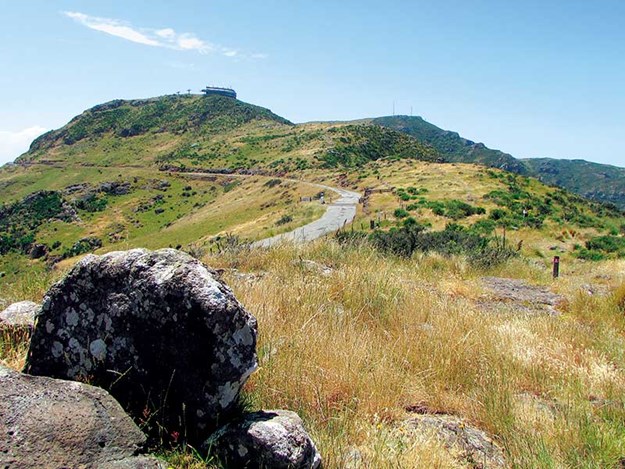
The Port Hills are volcanically formed, geologically part of the adjacent Banks Peninsula and Lyttelton Harbour. A crater rim walk runs the length of the hills from Godley Head to Gebbies Pass, and we walked along some of this track as we made our way to the head of the bridle track. Tussock grass and flax, interspersed with rocky outcrops, dominated the hills, though there were some pockets of podocarp forest here and there. Early settlers or Maori burned the forests that once covered the Port Hills.
When the first Europeans arrived in Lyttelton in 1853, they were faced with a steep climb up and down the hills on the hastily constructed bridle track. We read on an information sign that they had to carry their belongings with them, including bedding and household requirements. Luckily, we only had light packs and were able to enjoy the crater rim and bridle tracks, rather than labouring along them.
The path dropped gently and we kept our eyes peeled for the geckos and native skinks that enjoy sunbathing in the shrubby vegetation. We paused at the junction of the crater rim track and the section of the bridle path that leads down to Christchurch, where there was a monument celebrating the pioneer women. Many hundreds must have broken their trek here, looking down to what would be their new home.
The downhill path was steep. There were stone seats in places, memorials to the early pioneers, and good spots to stop and admire the view. We passed a sign warning that rocks could roll down the hillside and we saw some very large examples scattered around. The sign advised ‘no stopping’ so we continued briskly to the bottom.
A scenic drive
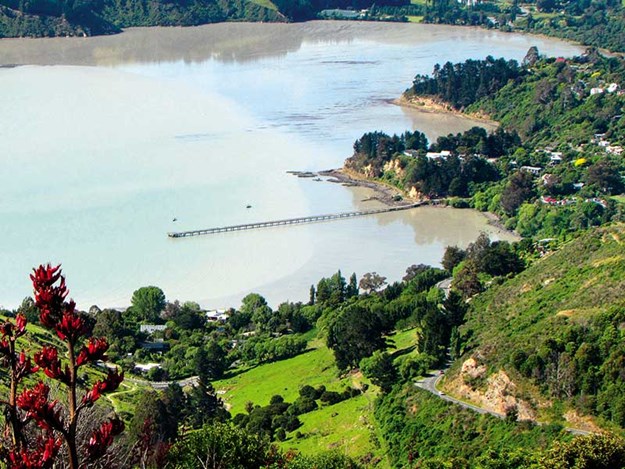
Keen to explore more of the Port Hills we took the car and drove to the Sign of the Kiwi Cafe, at the junction of Summit and Dyers Pass Roads. The road and the myriad walking tracks that are enjoyed today were the brainchild of Cantabrian Harry Ell. Realising that the public would enjoy having access to the hills, he developed the concept of a road, paths, and a series of rest houses. By the time of his death in 1934, development of the Summit Road and the unique rest houses were well underway.
The four rest houses seem to mix English pub names with a Kiwi twist: the Sign of the Takahe, the Sign of the Kiwi, the Sign of the Bellbird, and the Sign of the Packhorse. The Sign of the Takahe, a castle-like gothic style teahouse, stands at the entrance to the Summit Road.
Damaged in the 2011 earthquake, its repairs were almost finished at the time we passed by. The Sign of the Kiwi, an arts and crafts style building, was also earthquake- damaged but has been restored and is once again operating as a cafe for passing walkers and motorists.
We walked a short loop track behind the Sign of the Kiwi and were rewarded by views into Lyttelton Harbour, looking down into Governors Bay and across past Quail Island to Diamond Harbour on the Banks Peninsula.
A side trip
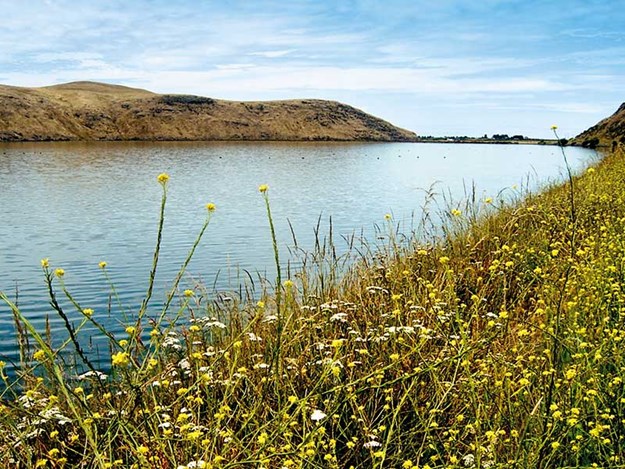
The view tempted us to explore so we continued along the Summit Road into the landscape we had just been admiring. Before long, we passed the Sign of the Bellbird, now used as a shelter for walkers. The dramatic shape of Gibraltar Rock almost led us to take the walkway to its summit but we continued. At State Highway 75, we turned for Little River, stopping at the gallery and cafe. This was a great spot with good food and coffee and amazing artwork and sculpture to peruse.
Little River was a quirky place. Beside the gallery, we noticed some unusual accommodation: two-storey silos, more than eight metres tall, with glazed ceilings for star watching.
Since we had our bikes on the car, we decided to cycle part of the Little River Trail. This 44km-long walkway and cycle track goes from Hornby, Christchurch to Little River. We cycled about 12km, passing pretty Lake Forsyth before stopping for a break at the old Birdlings Flat railway platform, where only the sign remains.
Then we zipped on through farmland before reaching the railway embankment beside the huge lagoon that is Lake Ellesmere/Te Waihora. The embankment was raised up so we had good views of the lake and the surrounding wetlands. Birdlife was abundant here and the lake seemed to stretch forever—it covers 198 sq km.
As we drove back to Christchurch, we enjoyed more stunning views. Port Hills has plenty to offer in the way of scenic drives and walking tracks. There are also mountain bike trails, orienteering courses, and rocks to tempt climbers. Certainly Christchurch’s playground.
More information
- The Christchurch Gondola is at 10 Bridle Path Road, Heathcote Valley, Christchurch
- Open 10am to 5pm daily
- Details of walks in the Port Hills can be found at christchurch.com and ccc.govt.nz
- Little River Cafe and Gallery is on the Christchurch Akaroa Road in Little River township. Open 9am to 5.30pm daily.
- Information about the Little River Cycle Trail can be found at littlerivertrail.kiwi.nz

